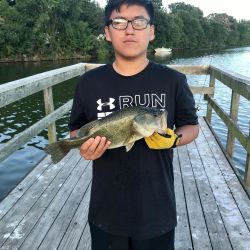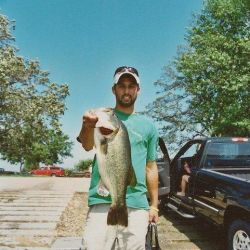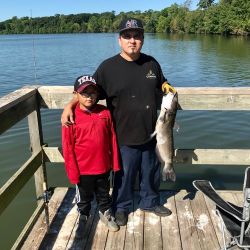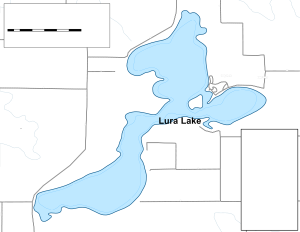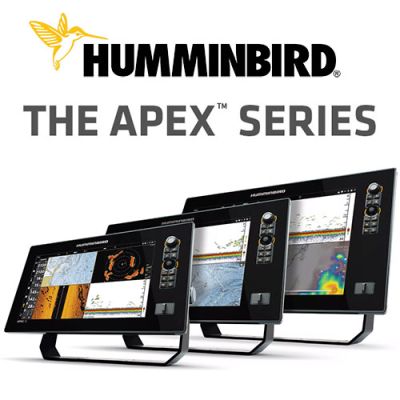Today's Best Fishing Times
Get the best fishing times for Lura Lake with Lake-Link's Fishing Forecast. SEE MORE
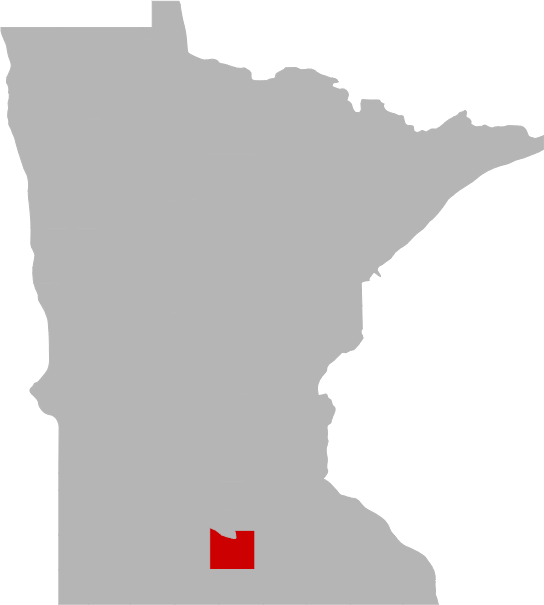
Share your catch!
We want to see what you've caught on Lura Lake.Frequently Asked Questions About Lura Lake, MN
- How big is Lura Lake?
- How deep is Lura Lake?
- What kind of fish can you catch in Lura Lake?
- Are there places to stay in the Lura Lake area?
- Are there topographical lake maps available Lura Lake?
- Are there boat launches on Lura Lake?
- Are there places to eat and drink near Lura Lake?
- What is the average air temp for Lura Lake?
- Are there any state parks near Lura Lake?
How big is Lura Lake?
How deep is Lura Lake?
What kind of fish can you catch in Lura Lake?
Other fish species in the lake include Golden Shiner, Green Sunfish, Hybrid Sunfish, Tadpole Madtom and White Sucker.
Are there places to stay in the Lura Lake area?
More Lodging Options
Are there topographical lake maps available Lura Lake?
Are there boat launches on Lura Lake?
Are there places to eat and drink near Lura Lake?
Explore the Lura Lake area in a RV
Are you looking for an adventurous vacation option that won't break the bank? Look no further than renting an RV! Contrary to popular belief, the process is much simpler than you might imagine. With just a few easy steps, you'll soon be experiencing the ultimate freedom and convenience of exploring the open road in your very own recreational vehicle. And the best part? RV travel can save you up to 60% compared to other types of vacations! With the money you'll save, you'll be able to travel even more and create unforgettable memories along the way. So why wait? Start planning your next adventure today with an RV rental. Learn more about renting a RV.

2020 Lightning Aluminum Enclosed 5-place Snowmobile Trailer
Lakeville, MN



What aquatic invasive species are found in Lura Lake?
Join us in the fight to prevent the spread of invasive species These sneaky creatures can hitch a ride on boats, clinging onto propellers, anchor lines, and trailers. They can even survive in hidden places like bilge water and ballast tanks, or disguise themselves in dirt and sand that sticks to nets, buckets, anchors, and waders. But don't worry, we have the power to stop them in their tracks with just a few simple steps. So let's do our part and protect our waters from these unwanted invaders.
History & Status of the Fishery
Lura Lake in Blue Earth County is a 1,359 acre lake south of Mapleton. It has an average depth of 5.0 feet and a maximum depth of 9.0 feet. A DNR-owned public access is located in the easternmost basin, a second access is located in Daly County Park, and a third public access operated by the Lura Lake Sportsman's Club is located on the south side of the lake. Eurasian watermilfoil was found in the lake in 2004. Boaters should be sure to remove all aquatic vegetation from boats, trailers, and equipment and drain all water when leaving Lura Lake to prevent the spread of Eurasian watermilfoil to other lakes. Lura Lake was surveyed the week of August 26, 2013 to monitor the fish community. Two standard gill nets and eight standard double frame lake survey trap nets were set. Lura Lake was reclaimed using a fish toxicant in 1994 to reduce abundances of undesirable species. Fish stocking following the reclamation resulted in a fish community dominated by game fish, particularly walleye, providing good angling opportunities for several years. From 2002 to 2008, however, the fish community appeared to be reverting back to a population dominated by black bullhead. Contrary to this trend, the 2013 black bullhead catch rates were near record lows and comparable to post-reclamation abundances. This marked decrease in black bullhead catch was accompanied by a great increase in yellow perch abundance with the second largest gill net catch rate of yellow perch observed in this system. Accordingly, yellow perch were the most abundant fish in the assessment in both trap- and gill-net catches. Yellow perch averaged 146.0 fish per gill net, which greatly exceeded the normal range when compared to similar lakes in Minnesota. Average total length of yellow perch captured in gill nets was nearly 8.0 inches, which was considered an acceptable size to most anglers.
Walleye gill net catches were 5.8 fish/gill net, a modest increase from 3.5 fish/gill net in 2008. Walleye from gill nets ranged from 16.0 to 27.0 inches, with an average total length of 20.1 inches. The lengths of walleye in Lura Lake during 2013 included a high proportion of "preferred" length fish by anglers, which is walleye over 20.0 inches in total length. Lura Lake walleye were generally of large size and condition; likely due to high abundances of a yellow perch forage base. Walleye fry (1.2 million) were stocked 3 out of 4 years to sustain the population. Age estimation indicated a population with sufficient stocking-based recruitment, with the 2013 walleye population comprised of 6 year-classes with individual ages ranging from 1 to 14 years.
The Lura Lake northern pike populations should provide good angling opportunities because gill net catches in 2013 marked an all-time high. Catch rates in 2008 were considered lower than average when compared to similar Minnesota lakes at 1.5 fish/gill net; however in 2013 gillnet catches were 10.5 fish/ gill net, which was above average. Mean weight of northern pike was 2.7 pounds in gill nets and 4.2 pounds in trap nets.
Largemouth bass were sampled in mid-May using electrofishing. Largemouth bass typically are not effectively sampled with trap and gill nets, thus electrofishing is the most reliable way to estimate abundance. A total of 34 largemouth bass were captured per hour of on time. Total lengths of largemouth bass captured using electrofishing ranged from 3.5 to 20.0 inches with an average total length about 17.0 inches. A total of five year classes were found in Lura Lake during 2013 electrofishing with individual ages ranging from 1 to 7 years. Lura Lake is known for having a population of older, larger individuals and has been the host site for bass angling tournaments during recent years.
Bluegill catches dropped from 29.9 fish/trap net in 2008 to 11 fish/trap net in 2013; however, current abundances are still above average for lakes of this type. Black crappie catch rates in trap nets (14.4 fish/trap net) were the highest observed since 1994, while the number caught per gill net (2.5 fish/trap net) was a modest decrease since the last assessment in 2008. Mean total length of black crappie was 7.6 inches. Common carp abundances decreased in both trap- and gill-nets since 2008. Catch rates were 0.5 fish/gill net (below average compared to similar Minnesota lakes) and 2.5 fish/trap net (slightly above average for a lake of this type).
Lake reclamations using a fish toxicant are thought to keep undesirable fish species at manageable levels for around 15 years. The 2008 assessment was nearly 15 years after the 1994 reclamation and showed carp and bullhead levels near pre-reclamation numbers. At that time, reclamation options were again being considered. However, the 2013 assessment showed numbers of black bullhead and common carp back down to near post-reclamation levels. The 2013 survey highlighted a fishery with good opportunities for largemouth bass, northern pike, black crappie, yellow perch, and walleye angling. Anglers can help maintain or improve the quality of fishing by practicing selective harvest. Selective harvest allows for the taking of smaller fish for table fare, but encourages release of medium to large-sized fish. Releasing these fish can help maintain balance in the fish community in Lura Lake and provide anglers the opportunity to catch more and larger fish in the future.
Water quality and shoreline erosion continue to be two large issues within Lura Lake. Watershed practices, layout, and water level and runoff management have long dictated water quality on Lura Lake, so it will take time and land use changes to see improvements in these conditions. Shoreline areas on the land and into the shallow water provide essential habitat for fish and wildlife that live in or near Minnesota's lakes. Overdeveloped shorelines cannot support the fish, wildlife, and clean water that are associated with natural, undeveloped lakes. Shoreline habitat consists of aquatic plants, woody plants and natural lake bottom soils. Plants in the water and at the water's edge provide habitat, prevent erosion and absorb excess nutrients. Shrubs, trees, and woody debris such as fallen trees or limbs provide good habitat both above and below the water and should be left in place. By leaving a buffer strip of natural vegetation along the shoreline, property owners can reduce erosion, help maintain water quality, and provide habitat and travel corridors for wildlife.
-Prepared by: Matt Mork, Fisheries Specialist.
What is the average air temp for Lura Lake?
Are there any state parks near Lura Lake?
For more Minnesota State Park information see our State Park Guide.
Lura Lake Reviews
Below is the word on street about Lura Lake.Have you been to Lura Lake? Why not share your personal reveiw with others?
Submit Review
ronald r.

More Nearby Lakes To Explore
There's more lake's to explore around Lura Lake...| DISTANCE | ACRES | MAX DEPTH | |
| Bass Lake | 4.3 mi | 199 | 20 ft |
| Rice Lake | 6.3 mi | 266 | 4 ft |
| Ida Lake | 6.6 mi | 129 | 8 ft |
| Mills Lake | 16.2 mi | 237 | 7 ft |
| Unnamed Lake | 17.3 mi | 103 | 21 ft |
| Loon Lake | 17.7 mi | 809 | 7 ft |
| Lake Crystal | 19.0 mi | 379 | 8 ft |
| Troost Pond | 19.8 mi | 44 | 45 ft |


 (1)
(1)
